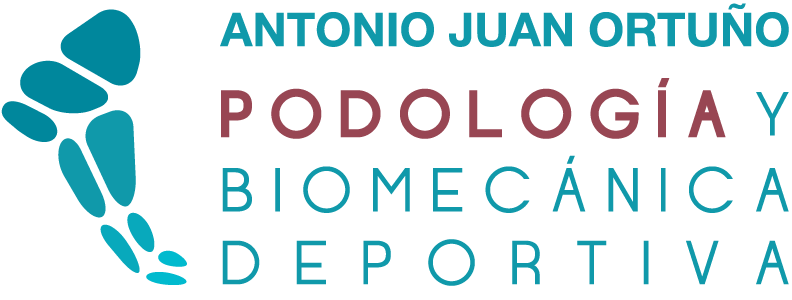The 6Ms are often used as a beginning point for the spine of a fishbone diagram (which denotes the potential causes of the issue statement). There won’t all the time be six causes, so you can add or subtract them as needed. Once you’ve the basic construction of the fishbone diagram, you and your team can collaborate and identify the varied causes affecting the final outcome. A trigger and impact diagram is a visual tool used to logically organize the numerous attainable causes for a particular problem or impact by displaying them graphically. The time period “cause and impact diagram” is usually used interchangeably with fishbone diagram and Ishikawa diagram and is used successfully in continuous enchancment activities throughout many industries and businesses. A cause and impact diagram examines why something occurred or would possibly occur by organizing potential causes into smaller classes.

Another common pitfall is to start development of the diagram earlier than the signs have been analyzed as totally as present data will permit. In such instances, the impact being defined could also be so general and ill-defined that the staff could have a hard time focusing and the ensuing diagram may be unnecessarily giant, advanced, and tough to make use of. A clear and exactly articulated impact will produce more relevant theories, better causal relationships, and a simpler mannequin for the selection and testing of theories. It could also be acceptable to hunt theories from additional persons acquainted with that component of the method.
Assuring Elections Quality
At this level, it’s also good to double verify that the four W’s, 5 M’s, and/or 5 P’s are thought-about as appropriate. Also, brainstorming may be finest in coping with extremely uncommon issues where there will be a premium on creativity. A cause-effect diagram is normally ready as a prelude to growing the info needed to establish causation empirically.
Continue adding possible causes to the diagram till each branch reaches a root trigger. As the C-E diagram is constructed, team members tend to maneuver back along a sequence of occasions that is typically called the causal chain. Teams move from the last word effect they are attempting to clarify, to major areas of causation, to causes within every of these areas, to subsidiary causes of each of these, and so forth. Teams ought to cease only when the final trigger out at the finish of every causal chain is a potential root trigger.
The 5 Ms (used In Manufacturing)
A comply with up audit and affected person satisfaction survey was conducted after an additional six months to supply both quantitative and qualitative knowledge for continuous improvement of patient waiting instances. A small group from the division have been asked to contribute to the cause and impact evaluation, collaborating in three brainstorming classes together with coaching on the strategies of developing the diagram. The division quality leader, who was skilled in cause and effect willpower methods, determined to discover the causes of lengthy waiting occasions through the use of a cause and effect diagram. We will focus on in additional detail later the need to test every causal relation in the C-E diagram for logical consistency.

Imagine a project going through delays; a Fishbone diagram can uncover the underlying causes, be it coding errors, communication breakdowns, or useful resource constraints. This methodical method allows growth teams to rectify issues promptly and guarantee project timelines are met. In practically any trade or business, variation is quality’s and efficiency’s kryptonite. Once an order has been positioned, a predictable and standardized process must be followed via to delivery. Variation in that course of often means variation within the ultimate product.
More Cause And Impact Diagram Info
On the floor, it appeared as if the trigger might need been associated to improper maintenance practices that result in a leak. Let’s check out how the 6 Ms are outlined and how they’ll contribute to course of variation. It’s essential to keep in mind that the cause and impact diagram alone doesn’t yield the basis trigger nor sensitivity of effects to the cause. Discover why SmartDraw is one of the best trigger and effect diagram software program right now. The greatest way to perceive cause and effect diagrams is to look at some examples of cause and effect diagrams. The existence of certainly one of these conditions does not mechanically imply a defect in the diagram; it merely suggests that additional investigation is warranted.
In the step-by-step procedure, begin by figuring out the main causes or lessons of causes that will be positioned within the packing containers on the ends of the principle spines coming off the central spine of the diagram. Ishikawa diagrams were popularized within the 1960s by Kaoru Ishikawa,[4] who pioneered high quality administration processes within the Kawasaki shipyards, and in the course of grew to become one of the founding fathers of recent management. All three forms of cause and impact diagrams could be created using MindManager’s fishbone diagram template. You can do this utilizing the MindManager fishbone diagram template to dissect one class at a time to find out the place dispersion happens. Also known as a fishbone diagram, the name Ishikawa is derived from the Japanese tutorial Kaoru Ishikawa, who within the Nineteen Sixties, popularized its use in Japanese industry.
To begin making a cause and impact diagram, write the main issue or downside to be analyzed in a field that is usually on the right fringe of the page, halfway down the drawing area or page. A line known as the «backbone» or «backbone» should lengthen to the left starting from the edge of the main field (if you’re utilizing a SmartDraw template, this can already be there for you). Next, angle branches off of the spine, every representing a trigger or impact of the principle concern.
- In such instances, the effect being explained could additionally be so common and ill-defined that the staff could have a tough time focusing and the resulting diagram could additionally be unnecessarily giant, advanced, and difficult to make use of.
- In nearly any trade or enterprise, variation is quality’s and efficiency’s kryptonite.
- While the symptom being explained must be as exactly defined as possible, the group should seek to develop just as many theories as possible about its causes.
- If a team does not develop a wide-ranging set of theories, they may miss their most severe root trigger.
- The cause-effect diagram does not provide an answer to a query, as another tools do.
A cause-effect diagram can typically be helpful in pondering systematically in regards to the resistance that the proposed resolution is likely to meet. If the phenomenon to be defined is resistance to the proposed remedy, then the group can assemble a cause-effect diagram to help identify an important resistances it might want to handle. The chief application of the cause-effect diagram is for the orderly arrangement of theories in regards to the causes of the observed quality downside that the group is assigned to resolve. Once the theories are nicely understood and ordered, then the group will use its greatest collective judgment to identify those theories which must be examined. The ultimate objective of the characterize step is the identification of the primary root cause or causes of the team’s problem. Keeping the strains parallel makes studying simpler and the visible impact extra pleasing.
Then a quantity of branches are added that denote the general areas by which the causes of issues could also be found. The generic headings most commonly used for these downside areas are methods (procedures), machines (equipment), individuals, materials, measurement, and setting. Dr. Kaoru Ishikawa, a Japanese quality control expert, is credited with inventing the fishbone diagram to help staff avoid solutions that merely tackle the signs of a a lot larger downside.
Next, on a whiteboard, write the issue statement in a field on the right-hand facet and draw a horizontal line protruding left from the problem assertion. The downside assertion resembles the top of the fish and the horizontal line resembles the spine, giving you room to develop ideas. A healthcare department carried out an inner audit and patient satisfaction survey to higher understand division throughput and capacity constraints.

Details all the means down to the design of the car’s doors, so drivers may relaxation their arm on it whereas driving, were thought of. The general “lack of training” trigger on the original diagram is often a great hazard signal that the causal chain needs to be checked. Lack of coaching in reading the catalog will create studying errors, but if the errors come on the keying stage, no amount of coaching on use of the catalog will do any good. Whenever one sees “lack of training” (or lack of anything else for that matter) on a C-E diagram, one ought to ask two questions. And second, how does that lack trigger the factor being defined on the moment? As we saw in our instance here, answers to those questions may help identify missing intermediate causal factor and causal relationships that are stated backward.
Continue to maneuver systematically down the causal chain inside each main or secondary trigger till that one is exhausted before shifting on to the next one. Construct a cause-effect diagram when you’ve reached the purpose of creating theories to information the characterize step. The information to be used to construct the cause-effect diagram comes from the folks conversant https://www.globalcloudteam.com/ in the issue and from data that has been gathered up to that point. At the head of the diagram is the “Effect” that the staff is investigating. The skeleton becomes the varied potential causes and the headers are the column heads from the affinity diagram. When diagnosing the cause of an issue, a cause-effect diagram helps to organize varied theories about root causes and presents them graphically.
Course Of Enchancment Helps Companies Keep Away From The Cost-cutting Demise Spiral
If a particular trigger is a little more advanced, be happy to draw smaller sub-branch lines coming off of the “cause” line. The cause-effect diagram doesn’t provide a solution to a query, as some other tools do. Its major value is to serve as a car for producing, in a very cause and effect diagram definition centered manner, a list of all known or suspected causes which probably contribute to the observed effect. At the time of generating the cause-effect diagram, it is not often recognized whether these causes are liable for the impact or not.
Because these now hint out logical causal chains, it’s simpler to plot efficient ways of testing the theories. For example, type formats which trigger issues in keying may differ from these which create issues within the original pencil entry. A cause-effect diagram is a visual tool used to logically manage attainable causes for a particular downside or effect by graphically displaying them in increasing detail, suggesting causal relationships among theories. A well-liked kind can also be referred to as a fishbone or Ishikawa diagram. Ishikawa diagrams are management tools used for quality control that help establish the basis causes of problems or defects found in enterprise operations.
It can also be useful for displaying relationships between contributing elements. One of the Seven Basic Tools of Quality, it’s sometimes called a fishbone diagram or Ishikawa diagram. With a whole and logical set of theories in hand, the staff will now want to discover which are the principal root causes. This structured strategy to establish theories allows investigation of these of importance quite than wasting time on trivial theories. One or more of these theories shall be selected for testing, collect the info needed for the take a look at, and apply a number of other tools to those knowledge to both confirm or deny the examined theories.
